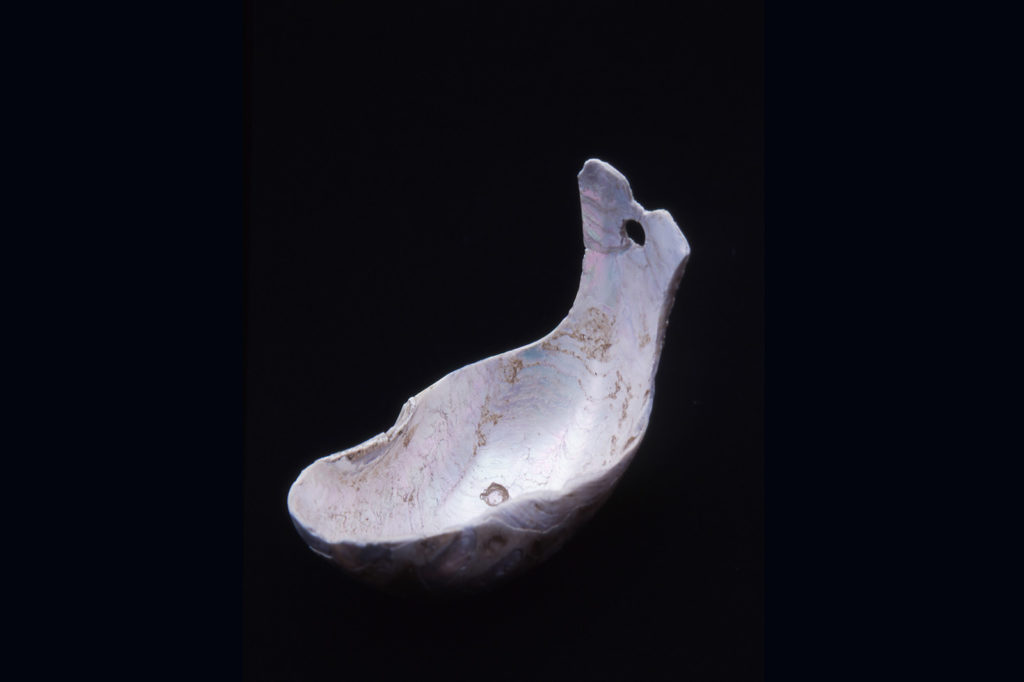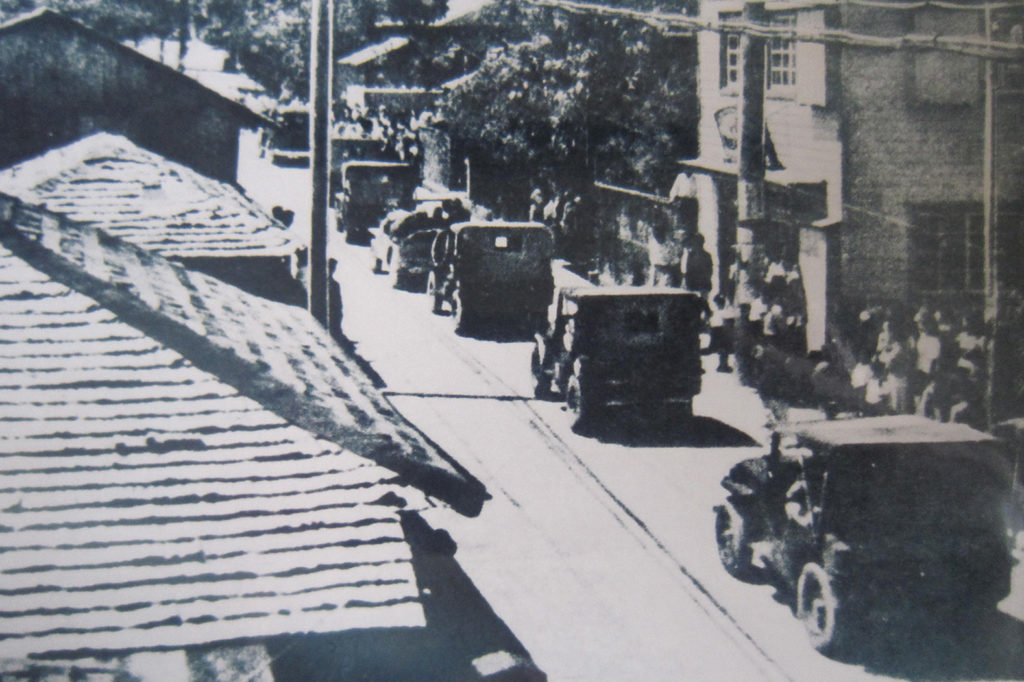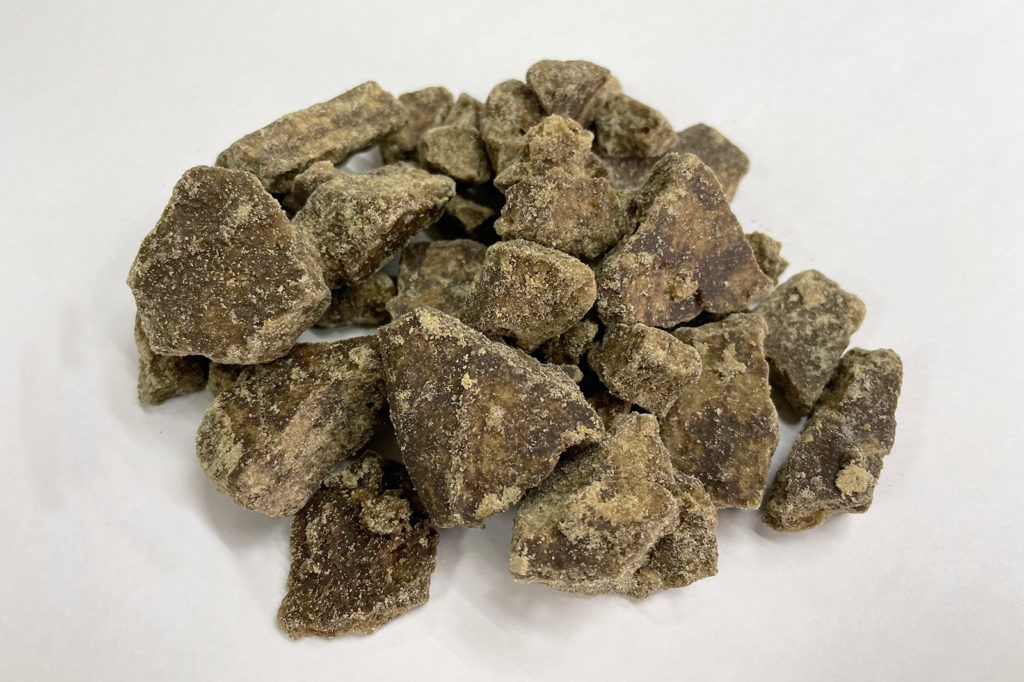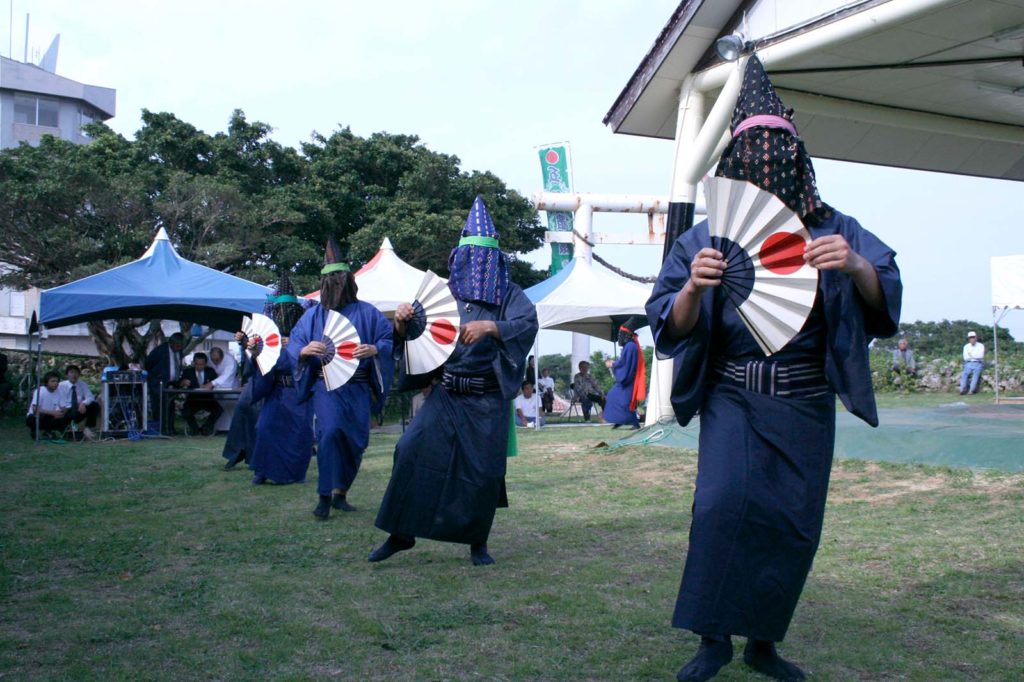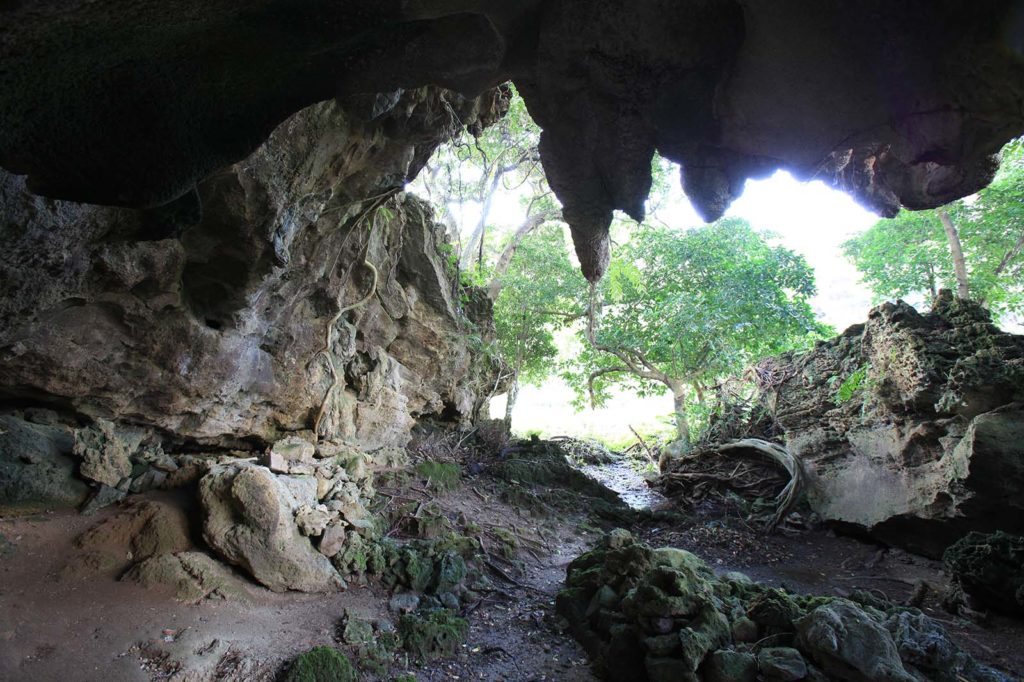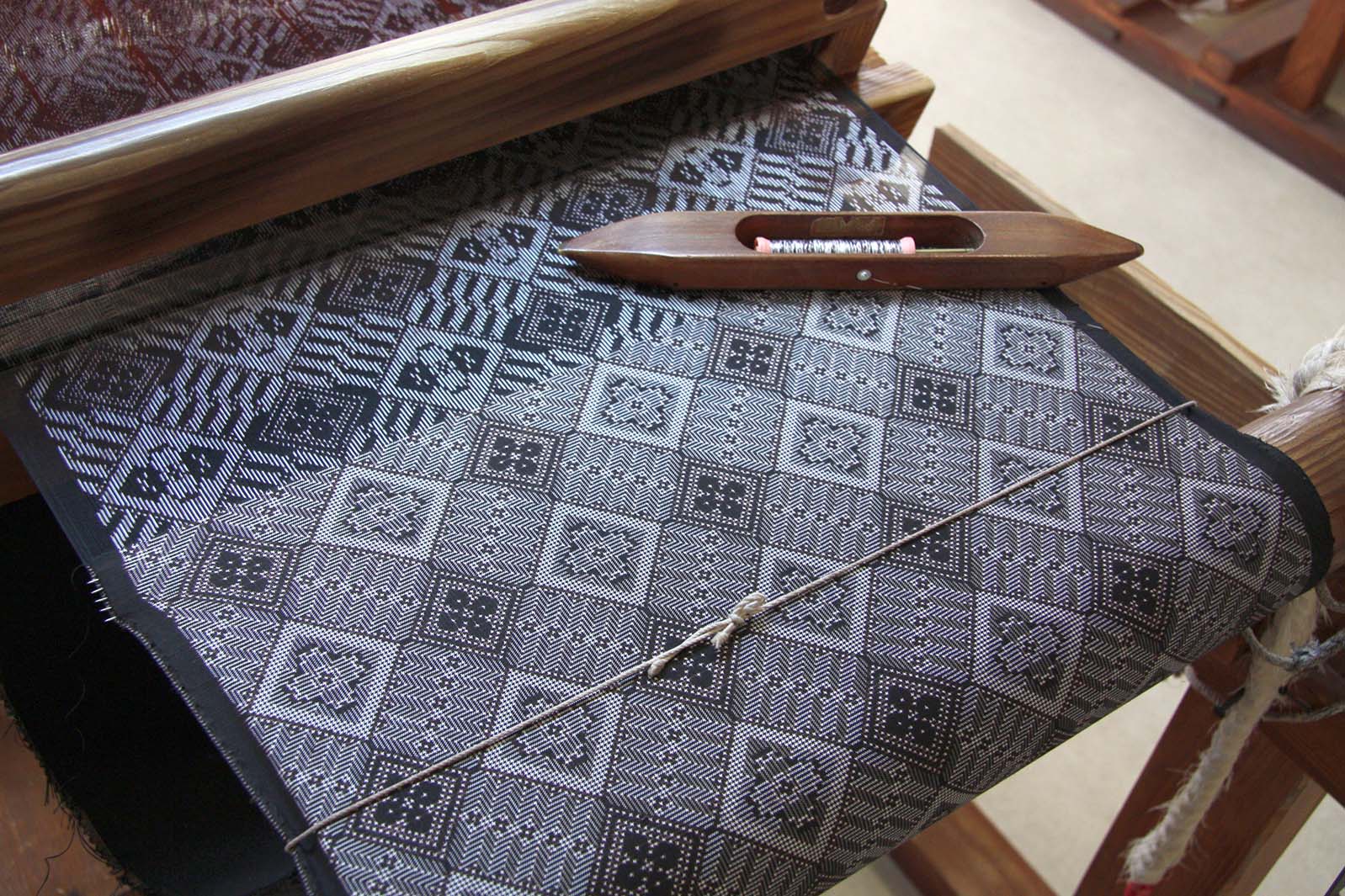
Culture and History
Culture of Amami Islands
Culture of Amami Islands
Islands filled with diversity
Diversity can be found everywhere on each of the islands of the Amami Archipelago. Take, for example, that Amami hosts outstanding natural scenery, as seen in its dense forests, dazzling white sands and atolls in the blue ocean. It is no wonder that many of these are designated as national parks. In many of the candidate sites for the World Natural Heritage in Amami, there is diversity in fauna and flora. This diversity, however, is not limited to nature but also exists in Amami’s culture.
Influence of Okinawan Culture
There are several layers to the history of the Amami Archipelago: In the early 15th century, it was under the rule of the Ryukyu Kingdom (Okinawa), and between the early 17th century and the late 19th century, it was governed as a Satsuma Feudal Domain. Currently, Amami is under the administration of Kagoshima Prefecture. Despite of all these administrative changes, the influence of Ryukyu culture is visible in the culture of Amami on each of its islands.
For example, the language (dialect) of the Amami Islands is linguistically classified as a Ryukyu dialect; however, precisely speaking, each island has a slight variation of its own. Even such a simple expression as “thank you,” could be expressed differently on each island. When it comes to the place names, there are also quite a lot of similarities with those in Okinawa.
In terms of the spiritual culture, Amami has traces of an organization of female shamans, called noro, as well as ceremonial services related to these female shaman of the Ryukyu Kingdom. Furthermore, while newer tombs found in Amami carry the same styles as those found on the Japanese mainland, old tombs demonstrate a traditional style of tombs called Moya or Turu. This type of tomb is primarily found in mountains or under cliffs, indicating that the old burial methods and styles of Okinawa had been employed in Amami. Additionally, other notable influences of Okinawan culture on Amami can be seen in elevated granaries, takakura, which are used to store daily-use grains. Bamboo woven baskets, such as teru (tiru), were treasured items for agriculture and fishing that demonstrate similarities with those in Okinawa. Notwithstanding, each of these objects does not copy the exact prototype of the Okinawa style, instead showingunique variations on each island.

Noro Ritual (Amami City, Amami Oshima)

Turu Tombs (Tokunoshima-cho, Tokunoshima)
Under the Satsuma Administration
During the administration of the Satsuma Feudal Clan, brown sugar made from local sugar cane started to be subject to taxation. The impact on their lives further exasperated the local people, especially in times of food shortage. Throughout the generations in Amami, sugar cane had been and still is a particularly important agricultural product. Production of Amami black sugar shochu (distilled alcoholic beverage) has only been permitted in the Amami Archipelago since 1954. Since then, numerous brands of shochu have been created on each island. Beverages such as Kibi (millet) vinegar and miki, a mixture of rice and sweet potato,* were an invention of the island people who used their traditional fermentation methods for production. During times of harsh food shortages, the cycad, a toxic plant, became a savior of the lives of the islanders. The wisdom of the local fermentative decomposition method was employed to detox cycads.
Amami, being extremely mountainous with little flat land, made travel from villages to planting fields generally located away from living quarters a great challenge to islanders. Thus, in order to make movement easier, the people invented a unique style of boat, called Itatsuke. It was designed to maximize load capacity rather than comfort. Itatsuke boats are quite different from Sabani fishing boats invented in Okinawa.
As for clothing, the everyday wear of the islanders in the old times was called bashagin. It is woven with fibers of Itobasho (Musa liukiuensis), which make a very cool attire. The silk textile treasured as Oshima Tsumugi has a shiny mysterious blackish brown color, and it used to be dedicated to the government in lieu of taxation during the Satsuma Domain administration. The weaving techniques have gone through numerous transitions over the ages as well, but they have been handed down to the present day.
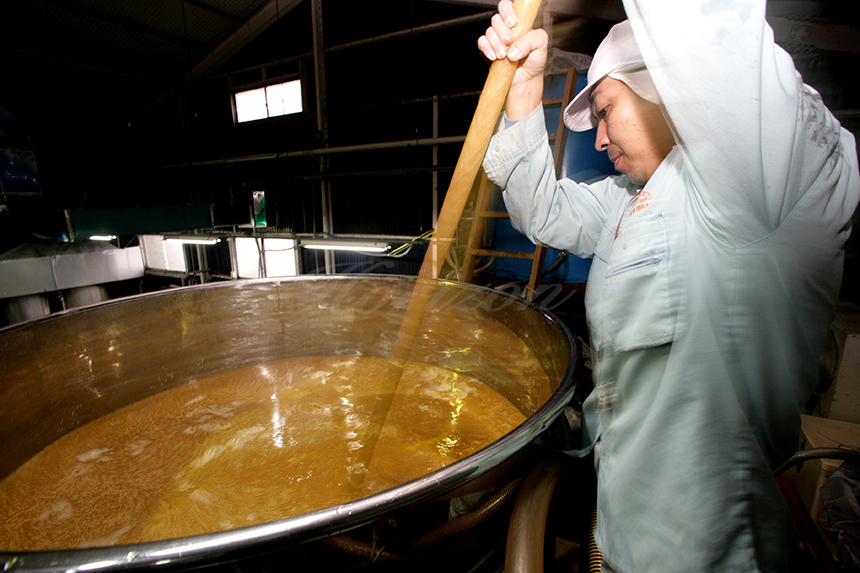
Secondary preparation scene of Amami Brown Sugar shochu
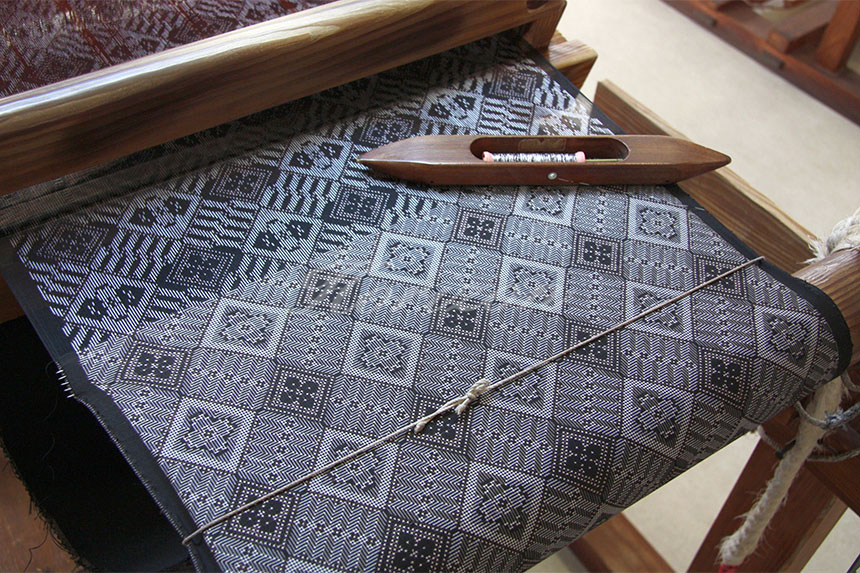
Classic patterns of mud-dyed Oshima Tsumugi (Amami Oshima)
A particular culture of pastime activities evolved among the locals that relieved their fatigue from hard day’s labor in the fields. People began to use their agricultural bulls for bull fighting to enjoy their days off. On Tokunoshima, Ushi-nakusami (literally, “cow comforting”), came to be held multiple times a year. Additionally, a culture of singing traditional pop songs called shima-uta began to emerge. Its scale and music instruments used for shima-uta resemble more and more of those of Okinawa as the islands get geographically closer and closer to Okinawa.
Yamato and Ryukyu Cultural Layers

Bull fighting event (Tokunoshima)
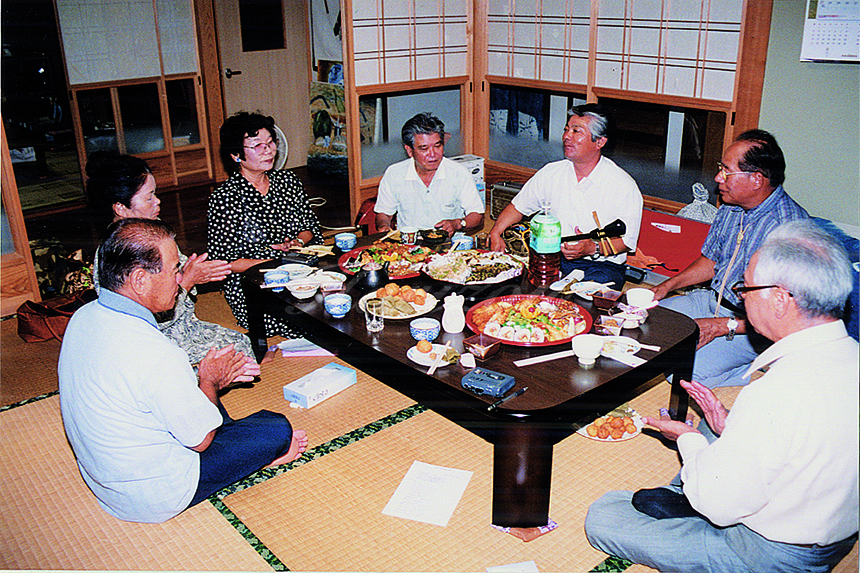
Singing scene of shima-uta (island songs) (Tokunoshima)
The Amami Archipelago has gone through different layers of cultural impacts: Ryukyu from the south and Yamato (Satsuma) from the north, which makes the history of Amami quite unique. On the Amami Islands, the islanders have long nurtured these two influences from the south and the north in a dynamic manner that has created specific traits on each of the Amami islands. The Amami Archipelago can be described as an aggregation of republican-like islands.Its culture still keeps lightting off flares of diversity.
Explanation by Dr. Kenjiro Machi, Curator at Setouchi Town Library and Folk Museum
Photos: Horizon Editorial Office

